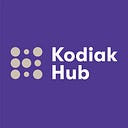Supplier Relationship Management: a stepping stone for supply chain success.
Flipping through the channels the other night, I came across the television program Gift vid första ögonkastet (Swedish version of Married at First Sight).
The program’s concept is pretty self-explanatory, from reading the title and a bit of imaginary thinking. Expert matchmakers compile groupings of couples that, they believe, will have successful marriages based on their qualities (on paper). The 4 couples are wed immediately, and move in with one another in the following days.
Conceptually, this program eliminates the traditional order of a relationship’s progression and flips the paradigm of dating on its head.
Fascinated by the concept, I found the show hard to look away from.
Simultaneously, I found myself deep in thought about the ideology of creating well-structured, long-lasting relationships and how this translates to the relationships formed in business everyday; particularly between buyers and suppliers.
What is it that makes a good buyer-supplier relationship, and what is the role supplier relationship management plays in successfully shaping, building and sustaining the buyer-supplier relationship?
Is it better to jump into a relationship head on, or thoroughly understand the person/entity/company down the other end of the aisle first, before tying the knot?
One thing is certain; well-structured, mutually beneficial buyer-supplier relationships only occur when there is engagement and effort put into the collaboration by both parties.
Building block for Risk Management
Managing risk is a central focus in all operations involving sourcing, purchasing, logistics, and all other supply chain functionalities.
To that effect, Supplier Relationship Management can be seen as the first step, or building block, for risk management strategies in many supply chains.
Let me clarify.
The majority of risk, or the possibilities of risk, is (typically) inserted into supply chains when the head entity (typically buyer) decides to operationalize external entities (suppliers) to fulfill functions in the supply chain such as production, pre-production or logistics.
With this being said, the collaboration between the head entity and the external entities must be effective to avoid risks from actualizing.
This collaboration and relationship can be aided with operationalizing supplier relationship management to ensure a thorough supplier selection process.
A strategic purchasing management system must be in place to be able to build on long-term collaborative relationships (Soh 2016). Without compliance and governance guidelines, there is no way to gauge if supplier relationships will prove fruitful or defective, and risk-filled.
Platform for Performance
After suppliers are selected from a thorough selection process, mutual buyer-supplier collaboration usually ensues.
Maintaining effective lines of supplier relationship management is incredibly important at this stage of supply chain collaboration.
Assessment and evaluation of the performance of this collaboration is necessary for ensuring that standards are continuously met, and value is being added to the head entity’s organization- through the performance of the external entity. And vice-versa.
This kind of effective collaboration requires supplier engagement and development programs, initiated by the head entity.
“Effective management of the supply chain has been identified as being of significant importance in achieving and sustaining a competitive advantage” (Soh 2016). Leveraging supplier relationships to better competitive advantage is crucial in large global organizations.
This is why performance, gauging performance and building a standard for high performance is so important to company progress and success.
When building standards for performance, the head entity (buyer/retailer) must work backwards. Performance evaluation goes beyond delivery speed, quality delivered, price-point and overall reliability.
Well-developed supplier performance evaluations are driven by identifying, “ […] what is valued by the end consumer, and thereafter secur(ing) or develop(ing) the needed competencies required of suppliers” (Roushdy 2015).
Again, the research points to the strategies available in SRM as a strong starting point for optimizing supply chain operations and strategies.
Stepping-stone for sustainable initiatives
To wear sustainability as an organizational badge of honor, the strategies and operations involved in the implementation of sustainable business practices cannot function in silos.
For a company to truly practice sustainability, from top-to-bottom, suppliers must be on the train towards sustainable business practices.
Implementing supplier relationship management in an organization’s supply chain strategies can serve as an excellent stepping-stone towards purchasing your suppliers a train ticket.
Let me provide an example to better explain how governance, development and compliance demands, on supplier performance can output sustainable business practices.
In an article from the Journal of Cleaner Production, delving into the role of SRM in reducing GHG emissions, it was determined that “[…] food supply chain operations contribute significantly to Greenhouse Gas emissions. In the United Kingdom (UK), supermarkets are leading operators in the food-retailing sector. With 75–90% of a typical food product’s “carbon footprint” occurring in the supply chain upstream of the point of sale” (Tidy 2016).
In this specific study and context, large retailers assured food-related suppliers were compliant with international and country standards, and were able to sink the overall GHG emissions in an entire country; suggesting SRM strategies and operations can result in more sustainable supply chain practices.
With all this being said, I believe there’s only one question left to ask.
Do you see the value in Supplier Relationship Management?
Until next week.
This publication is brought to you by author Sam Jenks, but also on part by Kodiak Rating — A Supplier Relationship Management SaaS functioning out of Stockholm, Sweden. Kodiak Community intends to challenge traditional business practices with innovative thinking and creation.
